This week, the pile pertains to art and state ideology in reviews of Frances Stoner Saunders’ history of the cultural Cold War, Who Paid the Piper and Zodiac, a new graphic memoir about the controversial Chinese artist Ai Weiwei.
Books
Propaganda was how the West won the Cold War. Frances Stonor Saunders explains the specifics in Who Paid The Piper, a detailed look into the cultural ideological warfare. She focuses on the men who made the propaganda campaign happen and the overlap between the intelligentsia and the intelligence agents.
During the height of the Cold War, the US government committed vast resources to a secret programme of cultural propaganda in western Europe. A central feature of this programme was to advance the claim that it did not exist. It was managed, in great secrecy, by America’s espionage arm, the Central Intelligence Agency. The centrepiece of this covert campaign was the Congress for Cultural Freedom, run by CIA agent Michael Josselson from 1950 till 1967. Its achievements – not least its duration – were considerable. At its peak, the Congress for Cultural Freedom had offices in thirty-five countries, employed dozens of personnel, published over twenty prestige magazines, held art exhibitions, owned a news and features service, organized high-profile international conferences, and rewarded musicians and artists with prizes and public performances. Its mission was to nudge the intelligentsia of western Europe away from its lingering fascination with Marxism and Communism towards a view more accommodating of ‘the American way’ – Frances Stoner Suanders, The Cultural Cold War (1)
Saunders explains how the CIA funded art around the world in an act of “psychological warfare,” or winning the hearts and minds of Europeans. The war destroyed Allied countries, and even in the countries that “won,” they lacked food, water, and jobs, with rates of 50% unemployment. American leaders in business, military, and government worried that Communism would be attractive to people living under these conditions.
To beat the Communists, America made several gigantic investments. American industry publicly and overtly committed to rebuilding Europe, but secretly and covertly, they also funded programs to propagandize an American point of view. Thus begins Pax Americana.
There are tragic ironies, like how Europeans saw exhibits of cutting-edge modernist paintings and how American communists at home faced severe repression. J. Edgar Hoover’s FBI surveilled and sabotaged them, and Joseph McCarty blacklisted them from employment.
The book recounts what could be called the inciting incident of the Red Scare: The 1949 Cultural and Scientific Conference for World Peace at the Waldorf Hotel. Another irony is that a conference for World Peace ignited ideological warfare.
CIA agents in attendance carried out hilariously erudite acts of sabotage, like Nicholas Nabokov (yes, Vladimir’s brother), who asked a question during a panel and tried to get a Soviet musician to denounce the party line and condemn a review in Pravda. Allegedly, Stalin would have murdered or imprisoned the musician for doing this, and that was Nabokov’s point. But it makes N. Nabokov look like a psychopath for trying to trick someone into saying executable opinions.
Life Magazine smeared the attendees of the conference, including the acerbic Dorthy Parker, whose FBI file “…listed variously as ‘an undercover Communist,’ ‘an open Communist,’ and ‘a Communist appeaser’” (53).
Dashiell Hammett also attended the conference; shortly afterward, he’d refuse to testify against his fellow communists, serve jail time, and quit writing in disgust. Arthur Miller was also in attendance; I read Miller’s play, The Crucible, in the 10th grade and taught as a parable for McCarthyism. This disaster conference seems like a direct inspiration for the first act.
The CIA and its many front organizations promoted the “Non-Communist Left” and targeted former Communists like Arthur Koestler and Jackson Pollock. To me, this sounded similar to the way federal police agencies cultivate criminal informants. Both men considered themselves communists who rejected Stalin in the 1930s, and the agency figured, “Who better to fight the communists than the communists?” (62). Agents admit that some artists receiving funding might not have even known about it. We’ll return to dark money’s mysterious role in art funding…
Saunders is concerned with the funding of “freedom and liberty” cultural warfare. She remarks that the Rockefeller family bankrolled the New York Museum of Modern Art from its inception. Nelson Rockefeller even called it “Mommy’s Museum” (258). MoMA was crucial in canonizing American Abstract Impressionism, America’s first “true” art style.
The agency men saw potential in abstract expressionism. There was power in the splotchy globs of paint. One conservative reactionary claimed expressionist paintings hide secret codes, “If you know how to read them, modern paintings will disclose the weak spots in US fortifications, and such crucial constructions as Boulder Dam.” (253). Abstract expressionism was a direct reputation to Soviet social realism. The museums insisted these paintings looked fresh, new, and free, and this uninhibited expression made the Soviet paintings, usually depicting people at work, look corny and boring.
The “Abstract expressionism as CIA Op” has made its way into mainstream publications. And a popular counterargument is, how would paintings win a war? Saunders demonstrates that it wasn’t only paintings. Instead, every artistic medium became an ideological battleground with shadowy funding. Who Paid the Piper? Pretty much everybody. Music and Radio Free Europe, Hollywood movies, literary prizes like the Nobel Prize for Literature, and every cultural product helped manufacture consent for America’s empire.
Who Paid the Piper? is an excellent book. Make sure to get the British edition, Who Paid The Piper, and **not the censored American edition, Cultural Cold War.
But covertly, I brought up this book for a reason. Did all these art spies go away after the fall of the USSR? Did they go online? What happened after the end of history?
Let us consider Ai Weiwei the “Most Dangerous Man in China.”
Comics
Zodiac: A Graphic Memoir By Ai Weiwei (Subject) | Elettra Stamboulis (Writer) | Gianluca Costantini (Illustrator) Penguin Random House, 2024
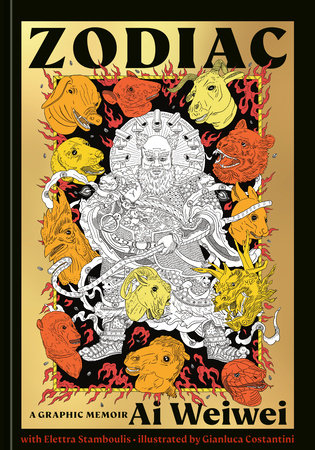
According to Western media sources, Ai Weiwei is one of Earth’s most accomplished living artists. Every article stresses that Weiwei is very popular and known for speaking truth to power by standing up to the repressive regime of the People’s Republic of China.
Weiwei claims Chinese authorities imprisoned him for 81 days for speaking truth to power. Chinese authorities claim they arrested Weiwei for not paying his taxes. Something strange is happening with the artist’s money. Credit Suisse closed his Swiss account, and he also claimed closed accounts in Germany and Hong Kong because he criticized these governments. Interesting…
Ai Weiwei describes himself as “an activist for freedom.” That’s a noble pursuit, and I’m thankful for my freedom of speech, which lets me say that I think Ai Weiwei’s art is thinly veiled propaganda, not to mention lazy, dumb, and obnoxious.
I don’t recommend Ai Weiwei’s new graphic memoir, Zodiac, but it did lead me to look up the artist’s strange career.
Weiwei grew up in a Chinese labor camp with his family. His father, Ai Qing, was a political exile and a poet with many pen names. While Ai Qing was a member of the Communist Party through the revolution, during the 1959 “Anti-Rightist Campaign,” he was expelled. Mao purged the party of everyone who advocated capitalism because he thought these people were a threat to the state. Ai Qing was sentenced to scrubbing toilets. Curiously, this labor camp allowed the prisoners to have jobs and live with their families, which sounds much better and more humane than an American prison.
When Mao died, China embraced capitalism, and Ai Qing was welcomed back into the party and made the president of the Chinese Writers Association. According to Zodiac, Ai Qing’s poems are printed in children’s textbooks today. Of course, the graphic memoir doesn’t mention why his father was expelled from the party. He was writing against communism.
If all history is family history, the son of a political exile capitalist poet would have no choice but to become an iconoclast, a multi-media performance artist with strange financial backing.
For a guy whose dad cleaned toilets, Weiwei could attend four expensive New York universities. The artist discusses his time in New York, hanging out with art scene icons like Alan Ginsberg and getting influenced by Andy Warhol.
In 1986, one of the first Ai Weiwei pieces to receive acclaim was “Condom Raincoat.” I find it vague and bizarre. Somehow, gluing a condom on a rain jacket was meant to bring awareness to the AIDS crisis.
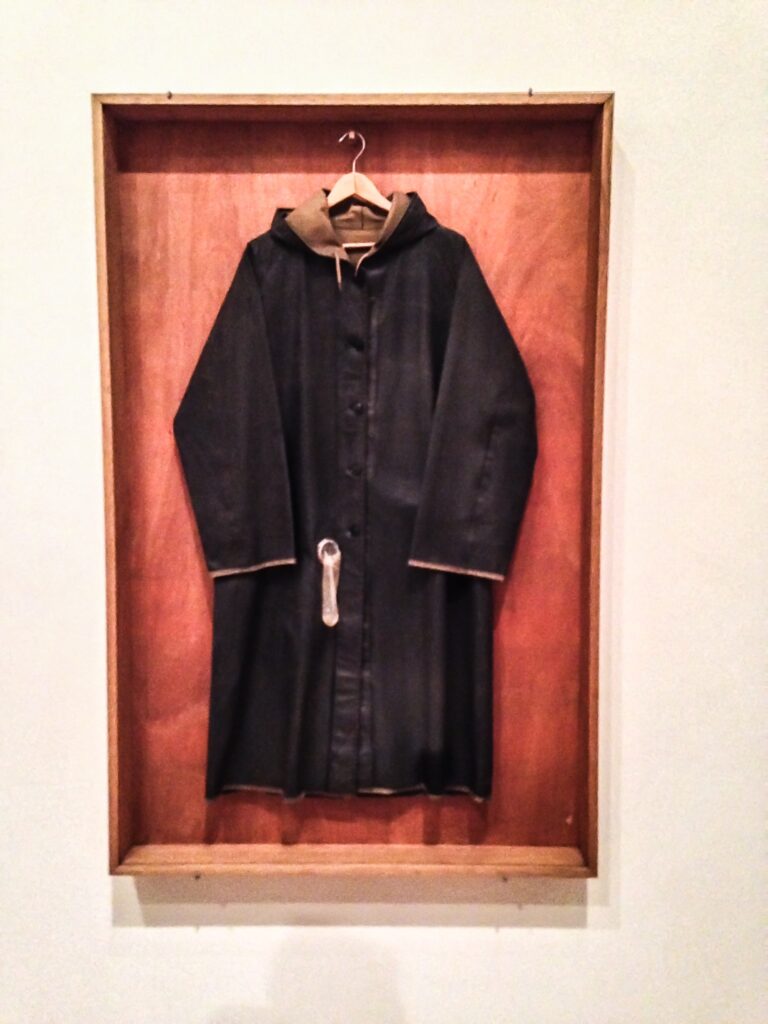
Weiwei lived in America for a decade, from 1983 to 1993. After this, he returned to China and cared for his elderly father. Surely coincidentally, this is right after the collapse of the USSR, when the global balance of power was shifting, and America was assessing new threats to trade dominance.
In 1995, Weiwei “made” arguably his most controversial work and, quite possibly, the dumbest and laziest piece of his career. Consider, “Han Jar Overpainted with Coca-Cola Logo” (1995).
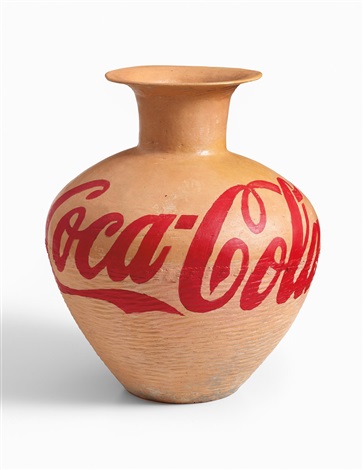
Weiwei stenciled a Coca-Cola logo on Han pottery over 2000 years old. It’s dated between 206 B.C. and 9 A.D. See, it’s a profound statement about how consumerism overruns history by ruining a cultural artifact. He took this idea further and smashed another priceless vase.
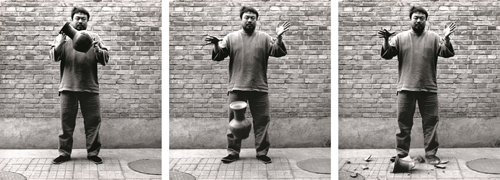
Why would someone do this? Isn’t this just historical vandalism? Why did Western museums exhibit this work? Why is it any different from the way ISIS destroys art? Here are Weiwei’s unsatisfying explanations in Zodiac.
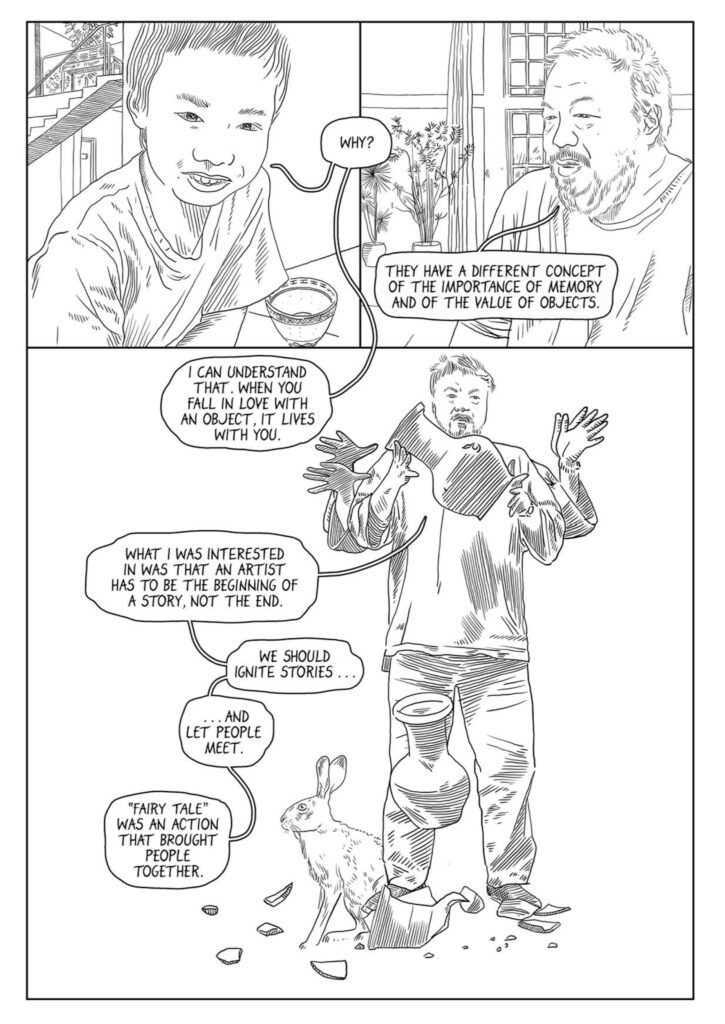
Around this time, Weiwei began work on “Study of Perspective,” a series of photographs from 1995-2003 where the artist gives stuff the middle finger. He flips off cities, buildings, and cultural artifacts from around the world.
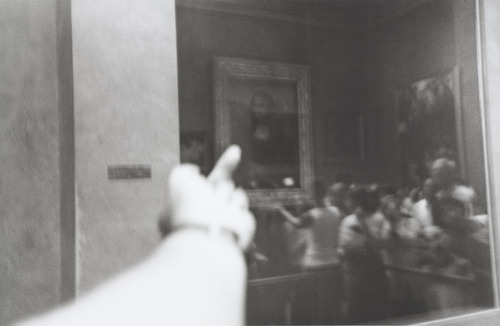
This man is praised as one of the world’s most controversial and thought-provoking artists. Really? Are the blurry travel pictures flipping off a painting meant to evoke laughter and derision? It’s like if Kid Rock started shooting on film. Both these photos and the defaced pottery culminated in “FUCK OFF!” an exhibition of the Chinese avant-garde that seemingly featured a lot of gore photography.
Around 2005, Weiwei started doing stuff that got him in trouble. He blogged for Sina. If you read about China, you’ve probably heard of Weibo, a social media app like Blogspot or Twitter, and Weibo acquired Sina. So…anybody could make an account on this website. I cannot verify if Weiwei’s blog differed from the average account profile or if he was invited especially to start blogging on it. Eventually, he was banned from the platform and switched to Twitter, claiming to tweet up to eight hours daily (huh).
2007 brings Weiwei’s Fairy Tale, a 2007 performance piece that, from **what I can tell, was buying Berlin vacations for 1100 Chinese factory workers. Framed as “freedom of expression,” obviously, coordinated vacations for impoverished workers was a provocation against the Chinese government. How would Germany react if China invited migrants living in Germany to tour Beijing? Or America, if migrants in Texas came back from Shanghai?
Sina banned Weiwei for reporting on a 2008 8.0 megaton earthquake that struck Sichuan. The artist as a reporter, too, eh? That’s unusual. The earthquake killed over 68,000 people and left another 4 million people homeless. Weiwei believed the Chinese government was to blame for responding and preparing for this natural disaster. In 2009, Weiwei published leaked classified documents on his blog, claiming the local government cut corners to build a school where over 5000 children died.
Weiwei claims China censored these posts, and I believe China censors media that threaten government leaders. But so does America. So does every government in history. Perhaps there was corruption that led to faulty building planning, but also, as COVID-19 showed us, disasters are great opportunities for insurgent narratives to sew government distrust.
Around this time, Weiwei was also working on the Beijing Olympics. He helped design the “Bird’s Nest” stadium and later went on to disown his work and condemn the Olympics to Western media.
2010 saw one of the artist’s most famous pieces, “Sunflower Seeds.” A pile of sunflower seeds meant to represent “Chinese people under Mao.”
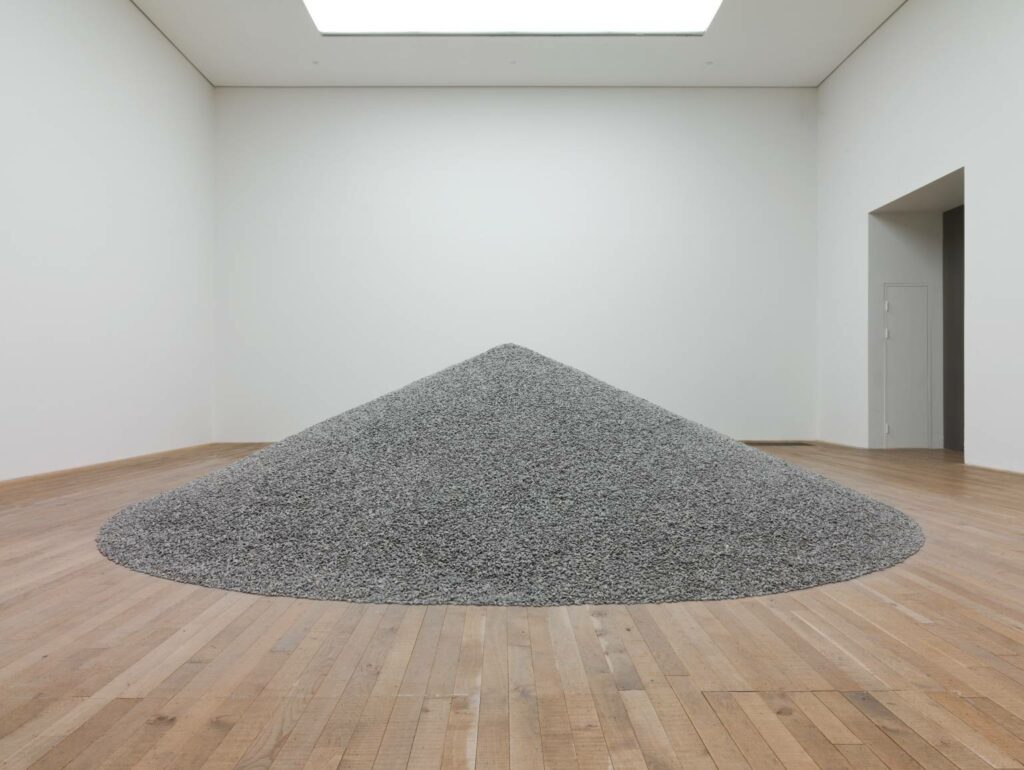
Skeptics of modern art say, “My two-year-old could make that.” Usually, that gives a two-year-old way too much credit, but in this case, I believe a two-year-old could spread a big pile of sunflower seeds on the floor. Perhaps the child wouldn’t know to say the seeds represent Chinese people.
Around this time, in 2011, Weiwei was jailed for 81 days in China, allegedly for thought crimes. He said things that were too controversial for the Chinese government. The Chinese government claims he didn’t pay his taxes.
After his release, he took sanctuary in Germany and spent years devoted to “understanding the migrant crisis” and traveling to hot zones in 41 countries for a documentary. His exhibit “Law of the Journey” focused on migrants. Of all the artist’s pieces, this is my favorite. His writing on migrants is elegant and based on first-hand experience. He even blames “the West” for the global migrant crisis, and even though “America” is more accurate, this is closer to truth than the condom jacket.
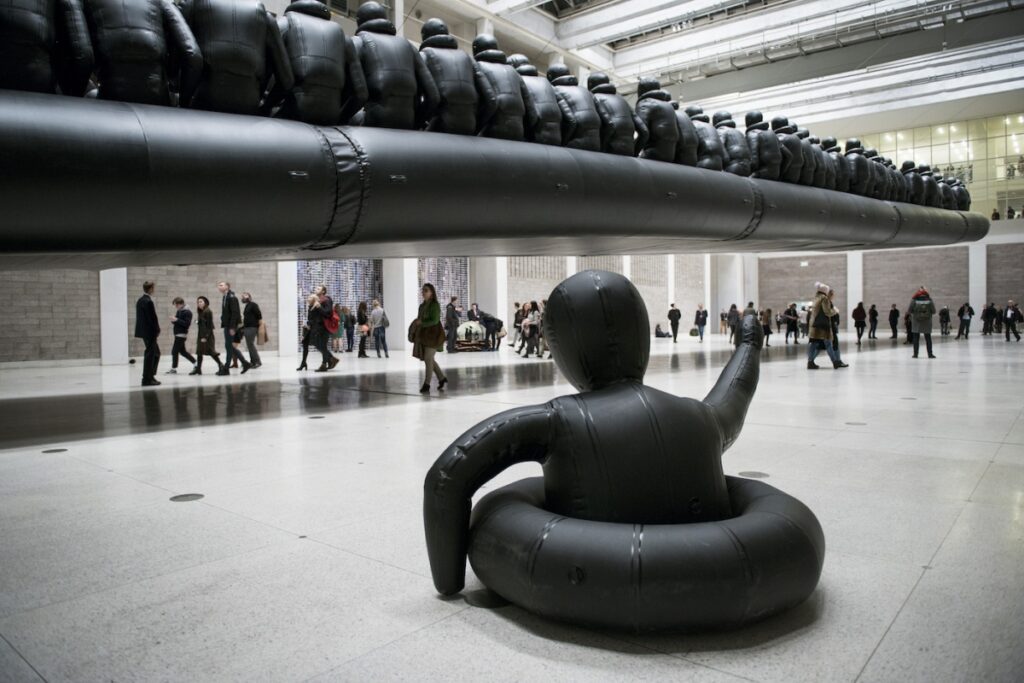
Fast forward to today. Weiwei has embraced AI art with a cornball-titled exhibit, “AI vs. Ai.” In the Guardian, Weiwei claimed that any art AI can copy is meaningless and that learning to paint realistically is “worthless.”
I enjoy political art, but not tepid propaganda. So much of Weiwei’s work equates transgression with freedom (like flipping off a building or breaking artifacts). The notion is that craft and dedication aren’t worth pursuing, and art should just be some ephemeral experience that makes the viewer say, “Huh?” This ridiculous insistence that the only art worth making pisses off governments (except never America).
This week, Weiwei’s graphic memoir was released. The author tells the conventional story of his life. This graphic memoir is undoubtedly the least exciting thing about Weiwei. Like much of the artists’ work, it seems like assistants made this book. How is this a memoir if Weiwei didn’t write it? It’s a biography with too much oversight from the subject! I dislike Gianluca Costantini’s illustrations: dull, flat, line drawings without shading or depth that evoke coloring book pages. The Chinese Zodiac structures the story as a vague gesture to Chinese culture but not much deeper than the back of the lunch buffet placemat.
Weiwei explains his life in stories to his son and considers his life, art, and ideology of “freedom.” It leaves much to speculation because the artist moves through each subject quickly and offers platitudes instead of reflection. Now, for the real heads, there’s a $275 deluxe edition with a signed print…of an illustration that Ai Weiwei did not illustrate. I can’t decipher that signature, but Weiwei did not draw that picture.
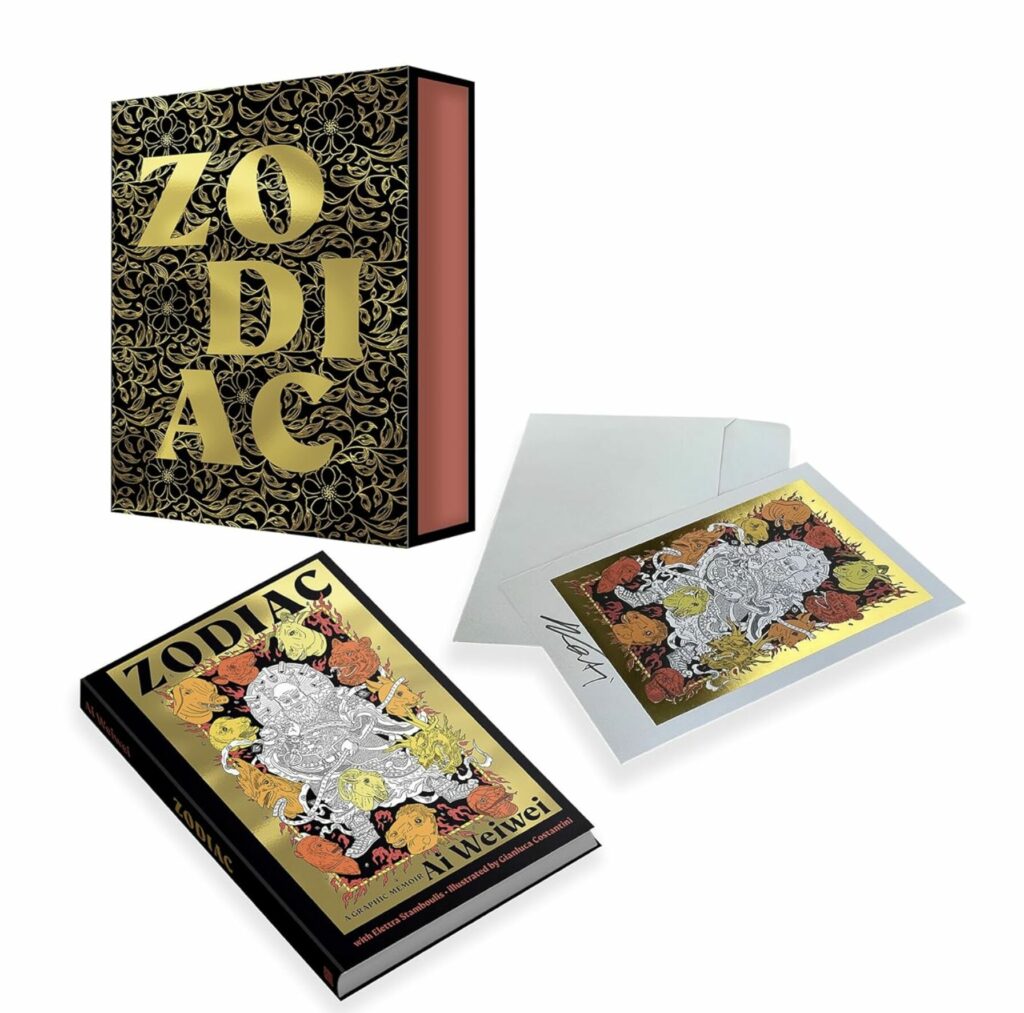
I should commend the artist for opening up my perspective to how art and propaganda function in the 21st century, but perhaps different from how the artist intended.
Pile of the Week
And finally, here’s this week’s pile. I am the skeleton angel living on a cloud, filling my head with strange and paranoid truths.
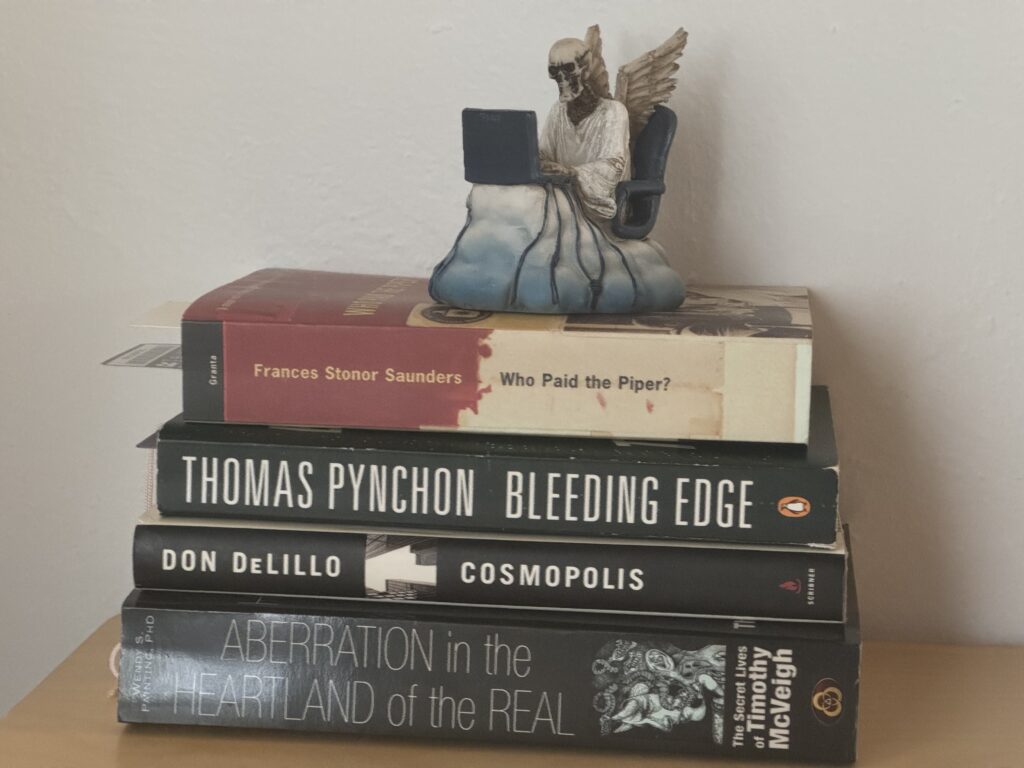
Expect this newsletter on Tuesday now! Yes, I know it’s Thursday. And you can even subscribe by email with Beehiiv.

Leave a Reply